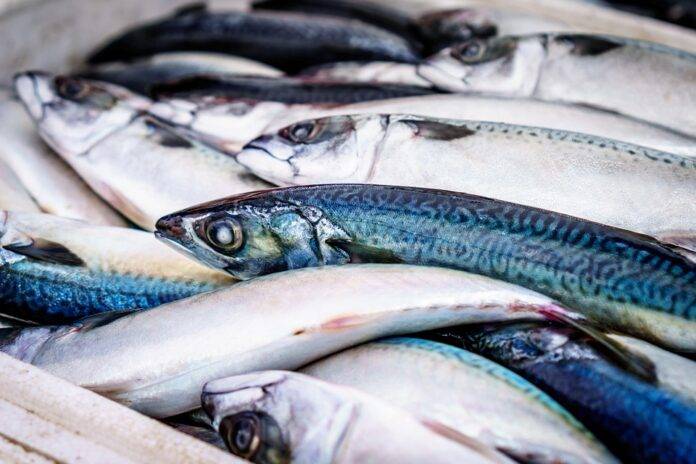Introduction
The global seafood industry is a significant sector that plays a crucial role in providing food for millions of people worldwide. Seafood packaging is an essential component of this industry, as it ensures the safe transportation and preservation of seafood products from the point of harvest to the consumer’s plate. In recent years, there have been significant trends and innovations in seafood packaging that have revolutionized the way seafood products are packaged, stored, and transported. This report will delve into the latest trends and innovations in global seafood packaging, highlighting key developments and their impact on the industry.
Current State of the Global Seafood Packaging Market
The global seafood packaging market is experiencing steady growth, driven by increasing demand for seafood products and the expansion of the seafood industry. According to a report by Market Research Future, the global seafood packaging market is projected to reach a value of $5.8 billion by 2023, growing at a CAGR of 5.3% from 2017 to 2023. This growth can be attributed to factors such as the rising consumption of seafood, growing awareness about food safety, and the development of innovative packaging solutions.
Key Players in the Seafood Packaging Market
Some of the key players in the global seafood packaging market include:
1. Sealed Air Corporation
2. DuPont
3. Berry Global Group
4. Amcor Limited
5. Smurfit Kappa Group
6. DS Smith Plc
7. Mondi Group
8. Coveris Holdings S.A.
These companies are actively involved in developing new packaging solutions for seafood products, focusing on enhancing shelf life, improving product visibility, and reducing environmental impact.
Trends in Seafood Packaging
There are several key trends shaping the seafood packaging market, including:
1. Sustainable Packaging
As consumers become more environmentally conscious, there is a growing demand for sustainable seafood packaging solutions. Companies are increasingly using eco-friendly materials such as biodegradable plastics, recycled paper, and compostable packaging to reduce the environmental impact of packaging waste. For example, Sealed Air Corporation has introduced a range of sustainable packaging solutions for seafood products, such as Cryovac® Darfresh® on Tray, which is made from 100% recyclable materials.
2. Modified Atmosphere Packaging (MAP)
MAP is a packaging technique that involves modifying the atmosphere inside the packaging to extend the shelf life of seafood products. By controlling the oxygen and carbon dioxide levels inside the package, MAP helps to slow down the growth of bacteria and preserve the freshness of the product. This technology is widely used in the seafood industry to ensure product quality and safety during transportation and storage.
3. Smart Packaging
Smart packaging solutions are gaining popularity in the seafood industry, as they offer real-time monitoring and tracking of product conditions during transportation. For example, RFID tags and sensors can be integrated into packaging to provide information on temperature, humidity, and location, ensuring that seafood products are handled and stored correctly throughout the supply chain. This technology helps to reduce spoilage and minimize food waste, ultimately improving product quality and consumer satisfaction.
Innovations in Seafood Packaging
In addition to trends, there have been several notable innovations in seafood packaging that are revolutionizing the industry. These innovations focus on improving product safety, extending shelf life, and enhancing consumer convenience. Some of the key innovations include:
1. Active Packaging
Active packaging involves incorporating active substances into the packaging material to enhance the quality and safety of the product. For example, oxygen scavengers can be added to packaging to absorb oxygen and prevent oxidation, while antimicrobial agents can be used to inhibit the growth of bacteria and extend shelf life. Active packaging solutions are becoming increasingly popular in the seafood industry, as they offer an effective way to maintain product freshness and quality.
2. Vacuum Skin Packaging (VSP)
VSP is a packaging technology that involves placing the product in direct contact with a thin film, removing the air from the package, and sealing it tightly. This technique creates a skin-tight packaging that conforms to the shape of the product, providing excellent product visibility and presentation. VSP is commonly used for seafood products such as fish fillets, shrimp, and scallops, as it helps to preserve the natural appearance of the product and enhance consumer appeal.
3. Intelligent Packaging
Intelligent packaging solutions incorporate advanced technologies such as QR codes, NFC tags, and printed sensors to provide interactive features and real-time information to consumers. For example, seafood packaging can include QR codes that allow consumers to access information about the product’s origin, sustainability, and nutritional value by scanning the code with their smartphone. Intelligent packaging enhances transparency, builds trust with consumers, and enables brands to communicate their values and story effectively.
Future Outlook for Seafood Packaging
The future of seafood packaging is likely to be shaped by advancements in technology, changing consumer preferences, and regulatory requirements. Key areas of focus for the industry include:
1. Development of eco-friendly packaging solutions to reduce environmental impact.
2. Integration of digital technologies for real-time monitoring and traceability.
3. Collaboration across the supply chain to ensure product safety and quality.
4. Adoption of innovative packaging formats to enhance convenience and shelf appeal.
Overall, the seafood packaging market is poised for continued growth and innovation, driven by the need for sustainable, safe, and convenient packaging solutions in a rapidly evolving industry.
Read: The Global Seafood Industry – Market Trends, Trade, and Future Outlook




